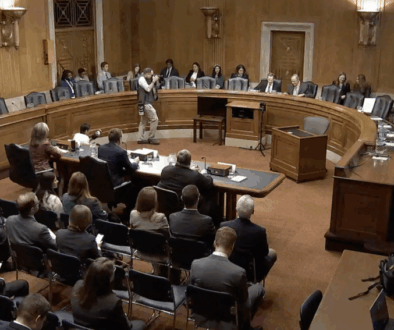EPA fails to adequately test tribal drinking water systems for PFAS, study finds
A federal testing program designed to monitor water systems for “forever chemicals” and other harmful contaminants is failing to equitably include US tribal populations, according to a new study published Wednesday in the journal Environmental Health Perspectives.
The study analyzed data collected by the Environmental Protection Agency (EPA) from 2013 to 2015 through a federal program that monitors unregulated contaminants in drinking water, and found that only about 28% of the people served by tribal drinking water systems were included in the testing for PFAS. In contrast, almost 80% of the population served by non-tribal drinking water systems was included.
The EPA tests looked for 21 different contaminants, including six types of per- and polyfluoroalkyl substances (PFAS). The analysis of the EPA data focused on water monitoring for PFAS, in particular, and how much testing was done of systems serving tribal populations.
Scientists say exposure to PFAS is associated with a range of health problems, including a heightened risk of developing cancer, birth defects, liver disease, thyroid disease, decreased immunity, hormone disruption and a range of other serious health problems.
The authors of the study noted in their paper that tribal nations in the United States are disproportionately burdened by diseases and experience lower life expectancy compared to non-Native individuals.
“We’ve been looking at issues of PFAS contamination and the unevenness of testing for years, and still these [findings] were surprising in terms of how big the discrepancy was,” said Alissa Cordner, co-director of the PFAS Project Lab at Northeastern University and an author of the study.
“Unfortunately, what tends to happen with PFAS is a lack of data is translated as a lack of a problem,” added Cordner. “Just because a place hasn’t been tested for PFAS doesn’t mean the PFAS aren’t there.”
Small systems excluded
Concerns about PFAS impacts on tribal communities are part of broad worries about the class of chemicals and their impacts on human and environmental health. PFAS are often referred to as “forever chemicals” because they do not naturally break down. The man-made compounds have been used for decades in a variety of industries for such things as electronics manufacturing, oil recovery, fire-fighting foams, cleaning products and non-stick cookware.
There currently are several state actions underway to try to rein in use of PFAS, and in October the Biden Administration unveiled a “roadmap” aimed at restricting and cleaning up PFAS contamination.
This month, EPA is expected to issue long-awaited drinking water health standards for two of the thousands of types of PFAS chemicals, PFOA and PFOS.
The EPA’s collection of data about contaminants suspected to linger in drinking water supplies comes under the Unregulated Contaminant Monitoring Rule (UCMR).
The relatively smaller size of the average tribal drinking water system results in the inclusion of fewer of these systems in UCMR testing, Cordner said. UCMR sampling criteria is based on the size of drinking water systems, with the testing that took place from 2013 to 2015 (UCMR3) accounting for all systems that served more than 10,000 people, as well as a random sample of 800 smaller systems.
The data identified PFOS, as well as other emerging contaminants, in some tribal drinking water samples. But Cordner said that the findings likely have not painted a complete picture of PFAS in even this relatively small selection of tribal drinking water systems.
“Even though that is the best available data we have that has nationwide coverage, the data has some pretty big problems,” said Cordner.
In testing scheduled for 2023 to 2025, the EPA plans to test all systems that serve more than 3,300 people. Cordner and her team projected that, as a result of this change, the new data will account for about 65% of the population served by tribal drinking water systems and about 92% of those served by non-tribal systems.
While Cordner applauds the improvement, she hopes the EPA will do more.
“EPA is clearly trying to show leadership on the PFAS issue,” she said. “This would be be a very meaningful and clear step they could take that would align with their clearly stated goals of furthering environmental health protection for tribal communities.”
Water justice issues
Tribal communities have long suffered from water justice issues. Almost half of all tribal US homes don’t have access to clean or reliable water, or lack basic sanitation. High levels of arsenic, manganese, or iron have been found in many tribal communities’ drinking water, and PFAS contamination is a growing concern.
“We would like to see the EPA do more testing and offer some cleanup options,” said Mark Junker, a member of the Tribal PFAS Working Group. “Once PFAS is determined to be in the environment, let’s figure out a way to get rid of it.”
The tribes want to engage more actively with an EPA working group designed to address PFAS issues in tribal communities, he said.
The EPA did not respond to a request for comment. On its website, the agency said “UCMR data represent one of the primary sources of national occurrence data in drinking water that EPA uses to inform regulatory and other risk management decisions for drinking water contaminant candidates. This data will ensure science-based decision-making and help prioritize protection of disadvantaged communities.”
(Featured Photo: The White Mountain Apache Tribe water facility. Photo by EPA.)




